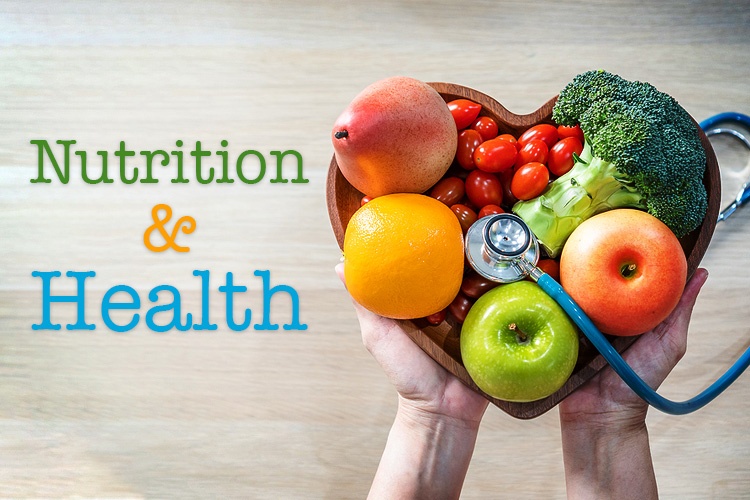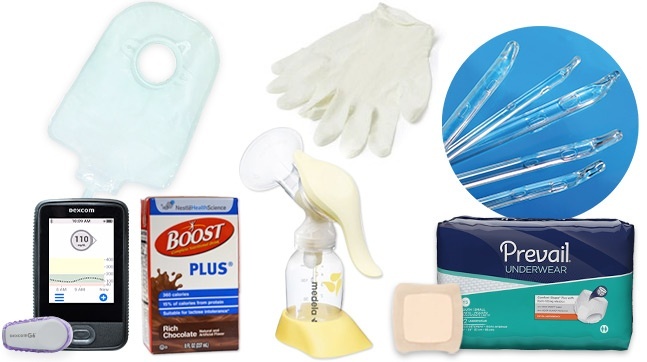Eat Well, Feel Better, Live Longer: The Link Between Nutrition and Wellness Is Real!
Healthy eating is one of the best things you can do for body.
This post was reviewed by our Director of Clinical Excellence and Oversight.
Staying closer to home this past year may have made you a lot more familiar with your kitchen. Perhaps you’ve even become a better cook! But have you also become a “better eater?” If improved nutrition is still on your to-do list, you’ve come to the right blog post!

As the title of this blog makes clear, the link between nutrition and wellness is real. At every age and stage, healthful eating is one of the best things you can do for yourself. According to the Centers for Disease Control and Prevention (CDC), good nutrition helps children develop properly and reduces the risk of chronic diseases. Adults who eat well live longer, with less risk of heart disease, obesity, type 2 diabetes, and some cancers. Proper nutrition can also:
- Reduce high blood pressure
- Lower high cholesterol
- Improve a person’s ability to recovery from injury or illness
- Increase energy levels
Eating better isn’t nearly as difficult as you may think. Here are some suggestions to help you adjust what you eat in order to take advantage of all the benefits good nutrition can bring.
Don’t Pass the Salt (or Sugar)
The right balance of nutrients affects your health in important ways. For example, consuming too much sodium (salt) can raise your blood pressure, putting you at greater risk for heart disease and stroke. Most Americans eat much more than the recommended limit of 2,300 milligrams (about a teaspoon) of sodium each day.

What’s in the salt shaker is just part of the problem. Sodium hides in all kinds of foods—from soda and prepared soups, to bacon, frozen shrimp, and bottled salad dressing. To compensate for the amount of salt found in the prepared foods you eat, consider using less salt in your cooking. Experimenting with fresh and dried herbs in place of salt can help you to keep all the flavors your family is used to while still decreasing the amount of sodium in their food. Since it can be tempting to add salt to a dish, consider keeping salt out of reach by taking the shaker off the table.
Sugar, a simple carbohydrate, is another concern for those trying to eat healthier, because too much contributes to weight gain, tooth decay, and possibly, heart disease. In addition, sugary foods add calories, and high-calorie diets can lead to type 2 diabetes.
Dairy products, fruits, and vegetables contain natural sugars which are different than the added sweeteners that find their way into cakes and cookies, cereals, and beverages, including many energy drinks. These empty calories provide no nutritional value. And because the body digests them quickly, they don’t supply energy in the way complex carbohydrates, such as whole grain bread and oatmeal, do.
Mom Was Right, As Usual
Remember adults telling you to eat your vegetables and keep your hands out of the cookie jar? Turns out they were right! More produce and less sugar is a great starting point for a healthier diet. Learn to look at your plate. You want to see more non-starchy vegetables (broccoli, asparagus, salad greens), fruit, lean protein, and dairy on your plate and less white bread, rice, potatoes, processed meats, baked goods, and sugary drinks.

If you have type 1 or type 2 diabetes, sticking to a diabetes diet may be even more on your mind. Living with diabetes can mean learning to manage your blood sugar through a diabetes diet. Check out our Answers to Questions About Diabetes and Food blog for more diabetes nutrition information about how to make the best food choices you can make to keep your diabetes in check.
We know that eating well is good for your physical health. But did you know that a good diet has also been linked to emotional wellbeing?
Make Some New Habits
Old habits can be hard to break. But with information and determination, you can stop the cravings and make better food choices. One way to think about it is in simple ingredients such as having an apple vs. a slice of apple pie! Here are some other good nutrition tips to keep in mind:
Eat real food. Processed foods are often low in fiber and protein and high in sodium and added sugars. If you frequently reach for frozen meals, it’s time to start cooking. Even simple dishes based on foods you can identify may go a long way toward improving your health.
Enjoy your morning joe. Coffee in moderation can be part of a healthy diet. It’s high in antioxidants, and several studies have linked it to lower risk of type 2 diabetes, Alzheimer’s Disease, and other conditions.
Savor that salmon. Fish is a great source of protein, and choices like salmon also offer healthy fats and other nutrients. People who eat the most fish are less likely to develop depression, dementia, and heart disease.
Get enough sleep. Too little sleep can affect your insulin resistance. That can lead to poor blood sugar control, weight gain, and obesity.
Start scrambling. For many years, eggs got a bad rap for contributing to high cholesterol. Now we know that whole eggs are actually highly nutritious. A review of more than 260,000 people found that eating eggs was not linked to heart disease.
Read labels with a grain of salt (Ha!). Food labels can be wrong or misleading so you should read them with care. For example, many unhealthy items, like sweetened cereals, boast that they’re made of whole grains. However, the whole grains they are referring to may only be a tiny percentage of what’s in the box. Instead, look for the claim “made with 100% whole grains.”
Nutrition and Mental Health
We know that eating well improves physical health. But did you know that nutrition is a factor in emotional wellbeing? An Australian researcher found that people with depression who ate better felt significantly happier than others who socialized more but didn’t make dietary changes.
Nutrition Tips for Older Adults
Here’s another fact: Good nutrition helps older adults stay sharp and resist illness. Even if they’re cooking for one, seniors should choose minimally processed foods, fruits and veggies, and calcium-rich choices like low-fat dairy, tofu, broccoli, and almonds for healthy bones. Fiber (apples, bananas, barley, lentils, and pistachios) keeps people of all ages regular and can also reduce the risk of heart disease, stroke, and diabetes.

HCD Can Be Your Partner in Health
HCD has a wide range of medical supplies for diabetes, such as Continuous Glucose Monitors (CGM) and blood glucose monitoring devices. We also carry supplies for incontinence, wound care, and ostomy, as well as breast pumps and nutritional supplements for those who need them. Our experts can coordinate with your healthcare professionals to help you get the products that will work best for you and supplies can be shipped right to your door. Our knowledgeable customer care representatives can answer your questions about insurance coverage and we handle all the paperwork. Let us give you a call by entering your phone number on the bottom left of the screen. We are eager to help. Call us or enroll online today.
Latest Posts
Medical Supplies Delivered to Your Door
Accurate Orders | Fast Delivery | Product Expertise

Disclaimer:
Unless otherwise noted, the recommendations in this document were obtained from the sources indicated. Be advised that information contained herein is intended to serve as a useful reference for informational purposes only. HCD cannot be held responsible for the continued accuracy of or for any errors or omissions in the information. All trademarks and registered trademarks are the property of their respective owners.
